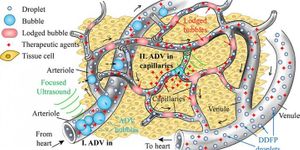Computer Simulations Offer Alternative Methods for Diabetic Drugs
The Governor's Chair for Molecular Biophysics at the University of Tennessee (Knoxville), Jeremy Smith, and the director for the Center for Molecular Biophysics at Oak Ridge National Laboratory, has collaborated with a research team from UT Health Science Center to find a chemical substance that may lower glucose levels in the same efficacy as the common diabetic metformin but with the possibility of being administered in lower dose.

Smith, in collaboration with Jerome Baudry, of the University of Alabama (Huntsville) as well as graduate student Karan Kapoor, from the University of Illinois at Urbana-Champaign, studied high-performance computing to develop sophisticated simulations that suggest chemicals that could activate GPRC6A, which is protein that regulates sugar levels while at the same time corrects abnormalities in pancreatic insulin secretion, glucose uptake into skeletal muscle, and the regulation of glucose and fat metabolism in the liver.
"This chemical compound lowers sugar levels in mice as effectively as metformin, but with a 30-times lower dose," Smith said. "It therefore is a good starting point for the development of a new and effective drug to fight diabetes."

Wolrdwide, about 400 million people suffer from Type 2 diabetes. The global cost of treatment and management of this metabolic disorder is estimated to be a trillion dollars annually. Metformin, a common diabetic drug that works to reduce the liver's production of sugar and lessen the risk of mortality, is currently first-line medication treatment by physicians. However, there remains a dire need for an alternative treatment option for patients who do not respond to metformin as well as others.
The computations derived from the research study confirmed that multiple chemical compounds, tested each by the Quarles laboratory at UTHSC, may activate the GPRC6A protein. Furthermore, a team of UTHSC medicinal investigators utilized the results from the research study to synthesize related molecules for pre-clinical testing use. The chemical compound by the name of ‘DJ-V-159’ was identified and concluded to be highly potent in inducing insulin secretion and decreasing glucose levels in mouse models.
Source: University of Tennessee at Knoxville








